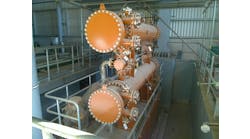Recent news about Southwest Airlines grounding 79 of its older Boeing 737 aircraft for inspections after a hole opened in the roof of a similar plane forcing an emergency landing made me think about the resource section I recently added to our website. The section, Reliability-Centered Maintenance, (www.chemicalprocessing.com/reliability_centered_maintenance), features PDFs that provide a wealth of useful information for developing efficient scheduled (preventative) maintenance programs for complex equipment, and managing such programs on an on-going basis. These so-called reliability-centered maintenance (RCM) programs aim to achieve the inherent safety and reliability capabilities of equipment at a minimum cost.
[pullquote]Written by F. Stanley Nowlan and Howard F. Heap for United Airlines in 1978, this 520-page document delves into many areas, including four basic maintenance tasks, how to develop an initial RCM program, and the role of scheduled maintenance. It also goes into great detail on the nature of failure, RCM analysis of systems, power plants and structures.
I first learned about this document from Michael Eisenbise, global reliability implementation specialist for BP Downstream and past chairman of the Society for Maintenance and Reliability Professionals. Eisenbise spoke at a condition monitoring webcast that Chemical Processing hosted in February. (You can access the on-demand event here). He insists that this 32-year-old document is the bible for maintenance and reliability professionals and often still refers to it. He even states, "All reliability-centered maintenance came out of that study."
If you've ever had the pleasure to work with Eisenbise, you'll know that one of his favorite phrases is, "If you want peaches, you have to shake the trees." He started shaking the trees hoping that Chemical Processing would post this document on its website. According to him, this document is hard to find since it didn't originate in an electronic format – it was written on a typewriter (gasp!). It was converted to a PDF and Eisenbise divided it into three sections to make it more manageable for our audience to download.
Since its posting on our site at the end of March, nearly 1,000 people have accessed this resource. The three PDFs are large (each is at least 150 pages), so they do take some time to download. I have a high-speed connection via my cable-TV provider that enables me to download each PDF in a few minutes. You can access the page directly by following the URL at the beginning of this column, or you can find it under the Resources tab of the menu bar on ChemicalProcessing.com.
I certainly hope this document proves worthwhile for you. I know Mr. Peachtree himself thinks very highly of it – and that's saying a lot from a reliability engineer with 35 years of experience.
Traci Purdum is Chemical Processing's senior digital editor and recent peach-tree shaker. You can e-mail her at [email protected].

